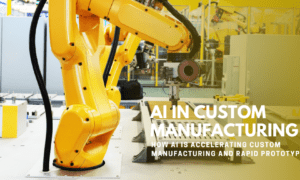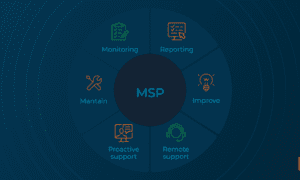As organizations increasingly rely on data-driven insights to shape product decisions, the underlying infrastructure for big data and machine learning has become a critical competitive advantage. The challenge is no longer just about modeling, but about creating scalable, reliable, and efficient systems that can handle petabytes of data while empowering developers. The transition from isolated data tools to unified, end-to-end platforms represents a significant shift in how enterprises approach ML operations.
Surya Bhaskar Reddy Karri, a software engineer with extensive experience in developing and optimizing developer productivity tools for big data and machine learning infrastructure at companies like Pinterest, has been central to this evolution. His work on platforms such as MLDeploy and ModelHub highlights the industry’s move toward integrated systems that prioritize developer experience, automation, and operational stability. Karri’s insights reflect a broader trend of treating internal infrastructure as a product, designed to serve the engineers and data scientists who use it daily.
Evolving toward unified platforms
The journey into building large-scale data infrastructure often begins with a simple goal: harnessing data to improve user experiences. However, the practical obstacles to achieving this can be immense, shifting the focus from data science to data engineering. Early on, Karri recognized this fundamental friction point in the industry.
He explains, “Early in my career, I was fascinated by how data-driven insights could influence large-scale product decisions and user experiences. But I quickly realized that the biggest obstacle wasn’t modeling itself—it was the friction in accessing, managing, and operationalizing data.” This understanding guided his work toward building foundational tools that abstract away complexity.
Over time, his approach has matured from creating standalone solutions to engineering comprehensive ecosystems. Karri notes, “My approach has evolved from building isolated data systems to architecting unified, end-to-end platforms that integrate data discovery, orchestration, and ML lifecycle management.” This strategic shift is crucial for measuring and improving developer velocity, a key factor in innovation, often tracked using software delivery metrics.
Simplifying model deployment
One of the most significant hurdles in the machine learning lifecycle is the gap between model development and production deployment. Traditional workflows often involve manual handoffs between data scientists, ML engineers, and infrastructure teams, creating bottlenecks and inconsistencies. The development of standardized tooling layers is essential to bridge this gap and accelerate innovation.
To address this, Karri led the design of MLDeploy, a platform intended to streamline the entire process. “MLDeploy was designed to make machine learning deployment as seamless as code deployment,” he states. This goal required a system that could automate the model lifecycle from start to finish.
According to Karri, “The platform integrates tightly with Pinterest’s internal Compute Platform and dataset systems, ensuring reproducibility, version control, and easy rollback.” Such integration is foundational to modern MLOps, where established design patterns for model deployment and a clear deployment contract standardize how models are managed.
Addressing enterprise-scale challenges
As ML systems grow to serve enterprise-wide needs, new challenges emerge related to resource management, job orchestration, and system resilience. At this scale, efficiency is not just about performance but also about cost containment and stability across thousands of concurrent processes. Addressing these issues requires a focus on fault-tolerant design and intelligent resource allocation.
Karri identifies three primary challenges: “At enterprise scale, the primary challenges lie in orchestration, resource contention, and system observability.” Efficiently managing valuable resources like GPUs is a critical aspect of this. He elaborates on resource contention, stating, “Efficient utilization of GPUs and compute clusters is critical to minimize idle capacity and costs.”
This is a significant industry concern, given the high cost of AI compute for training large models. The architectural differences between hardware like the NVIDIA H100 and A100 GPUs further highlight the importance of designing systems that can leverage the most efficient hardware for a given task.
Optimizing data pipeline performance
The speed and scalability of data pipelines directly impact an organization’s ability to make timely, data-informed decisions. Bottlenecks in data processing can delay analytics and slow down the feedback loop for product improvements. Strategies centered on observability, adaptive processing, and intelligent caching have become essential for maintaining high throughput in complex data environments.
Karri’s work has focused on revolutionizing how data is queried and analyzed at scale. “My strategy centers on observability, adaptive scheduling, and query optimization,” he says. This involves embedding sophisticated mechanisms directly into the data platform to reduce redundant work and accelerate results.
“Beyond usability, we embedded query execution profiling and caching layers, reducing repeated computation and improving end-to-end data pipeline throughput,” Karri adds. This approach aligns with advanced database techniques, such as adaptive query processing and dynamic caching for continuous queries that use A-Caching algorithms to optimize performance.
Flexibility and maintainable architecture
A central tension in designing infrastructure tools is the trade-off between flexibility and robustness. A platform must be adaptable enough to support a wide range of use cases and frameworks, yet structured enough to be maintainable and scalable. The key to resolving this conflict lies in modular design and clearly defined interfaces that prevent monolithic coupling.
Karri advocates for an architecture built on composable components. “Flexibility and robustness often conflict—so the key is modular architecture and well-defined abstraction layers,” he explains. This philosophy was applied in the creation of MLHub, a unified ML lifecycle platform.
“I designed & built [it] with reusable, plug-and-play components across its core modules,” Karri notes. This principle is reflected in microservices, where API evolution patterns are used to manage changes, and in data systems that use producer-centric data contracts to ensure stability.
Lessons from scaling infrastructure
Building and scaling ML infrastructure at a company like Pinterest provides valuable lessons that are applicable across the industry. The success of such platforms hinges not just on technical performance but also on their usability and the governance structures built around them. Treating infrastructure as a product, with engineers and data scientists as the end-users, is a critical mindset for success.
Reflecting on his experience, Karri emphasizes a user-centric approach: “Prioritize developer experience early. The success of infrastructure depends not only on performance but also on usability.”
Another key takeaway is the need for proactive design that anticipates failure. “Distributed systems fail in unpredictable ways; fault isolation and self-healing mechanisms are essential,” he advises. This aligns with the principles behind the DORA metrics and the use of a Service Level Objective (SLO) to maintain stability.
The future of ML infrastructure
Looking ahead, the next generation of ML infrastructure is poised to become more intelligent, autonomous, and seamlessly integrated into developer workflows. The goal is to further abstract the underlying complexity, allowing engineers to focus on innovation rather than orchestration. This evolution will be driven by advancements in automation and AI-assisted development.
Karri envisions a future where systems are largely self-managing. “The next wave of ML infrastructure will be autonomous, declarative, and cost-aware,” he predicts.
A key part of this will be automated optimization. “Real-time tradeo[ff] engines will balance accuracy, latency, and cost automatically,” Karri continues, a concept explored in techniques that navigate the accuracy-cost trade-off.
The objective is to make the machinery behind machine learning invisible. As Karri puts it, “The goal is to make ML infrastructure invisible yet intelligent, empowering engineers to focus entirely on innovation, not on orchestration.” Achieving this will require continued innovation in cost-effective, SLO-aware inference serving systems.
As enterprises continue to scale their AI and ML capabilities, the principles of modular design, developer-centricity, and automated governance will be paramount. The work of engineers like Karri in building these foundational platforms is critical for turning the promise of data-driven decision-making into a practical and sustainable reality.



































